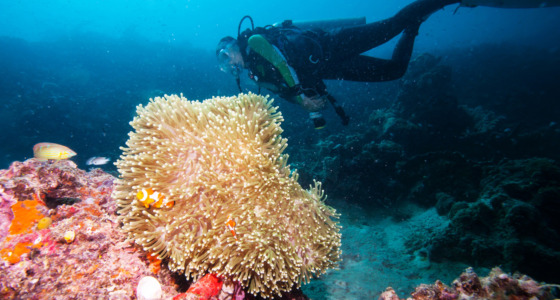

The importance of sustainable tourism shouldn’t be understated. For one, it played a crucial role in reviving the economy of La Paz, Mexico, which was once a declining fishing village. By focusing on eco-friendly practices and preserving local culture, the town transformed into a popular sustainable tourist destination, bringing new jobs and financial growth to the community.
But there is a lot more that sustainable tourism can accomplish. Let’s explore.
What is sustainable tourism: definition
Sustainable tourism aims to minimize the negative impact of tourism on the environment, local communities, and cultural heritage while promoting their long-term conservation and development. It seeks to balance the needs of tourists, hosts, and the destination as a whole, through responsible and equitable use of resources.
Sustainable tourism is becoming increasingly important as the world becomes more conscious of the impact of human activities on the environment and local communities.
What are the main principles of sustainable tourism?
The principles of sustainable tourism are centered around the three main pillars of sustainability: economic, social, and environmental sustainability:
- Minimizing the negative impacts on the environment: This includes reducing waste, conserving energy and water, and preserving biodiversity.
- Supporting local communities: This involves ensuring that local communities benefit from tourism, such as through job creation, cultural exchange, and preservation of local heritage.
- Promoting cultural understanding and respect: This involves ensuring that tourists have a positive impact on local cultures and that cultural heritage is preserved for future generations.
These principles aim to minimize the negative impacts of tourism while maximizing its positive impacts.
What sustainable tourism types are there?
There are several types of sustainable tourism, each with its own unique benefits and challenges. Some of the most popular types of sustainable tourism include:
- Ecotourism: This type of sustainable tourism focuses on the conservation of natural resources and wildlife, as well as educating tourists about the environment.
- Community-based tourism: This type involves local communities in the planning and management of tourism activities, ensuring that they benefit from the economic and social impacts of tourism.
- Cultural tourism: This type involves visiting cultural sites and learning about local traditions and customs. It helps to preserve cultural heritage and promote cultural exchange.

Who and what does sustainable tourism benefit?
The benefits of sustainable tourism are numerous, both for the environment, local communities, and tourists:
- Economic benefits: Sustainable tourism creates jobs and contributes to local economies. It also provides a steady source of income for local communities, which can help to reduce poverty.
- Environmental benefits: It helps to preserve natural resources and biodiversity, as well as reduce waste and conserve energy and water.
- Social benefits: It helps to foster cultural exchange and understanding, as well as support local communities and preserve local heritage.
Sustainable tourism is a key component of sustainable development and helps to ensure that future generations will have access to the same natural and cultural resources that we do today. The importance of sustainable tourism is also reflected in the growing number of travelers who are looking for more sustainable travel options.
Example of sustainable tourism

An example of sustainable tourism is the Galapagos Islands, located off the coast of Ecuador. The Galapagos Islands are a prime example of ecotourism, as they are home to a unique and diverse array of wildlife and plants.
Visitors to the Galapagos Islands are encouraged to participate in sustainable tourism activities, such as visiting local communities and learning about the culture, visiting conservation sites, and taking part in sustainable wildlife viewing.
The Galapagos Islands are also a prime example of community-based tourism, as local communities are involved in the planning and management of tourism activities.
Who needs to take action toward sustainable tourism?
There are different stakeholders in sustainable tourism, with different roles and responsibilities in this initiative. Tourists are the main customers of the tourism industry and play a critical role in promoting sustainable tourism practices through their choices and behaviors.
Next, there are tour operators and travel companies that are responsible for providing sustainable tourism products and services to tourists, as well as advocating for sustainable practices within the industry.
Additionally, local communities must be involved in the planning and management of tourism to ensure that they benefit from it and that it is sustainable.
And perhaps most importantly, government agencies and policymakers need to set standards and regulations for sustainable tourism, as well as support sustainable tourism initiatives through funding and infrastructure development.
Sources:
Sustainable development, UNWTO
Sustainable tourism – statistics & facts, Statista
Sustainable tourism as a driving force of the tourism industry in a post-Covid-19 scenario, PubMed
Importance of sustainable tourism, ResearchGate








